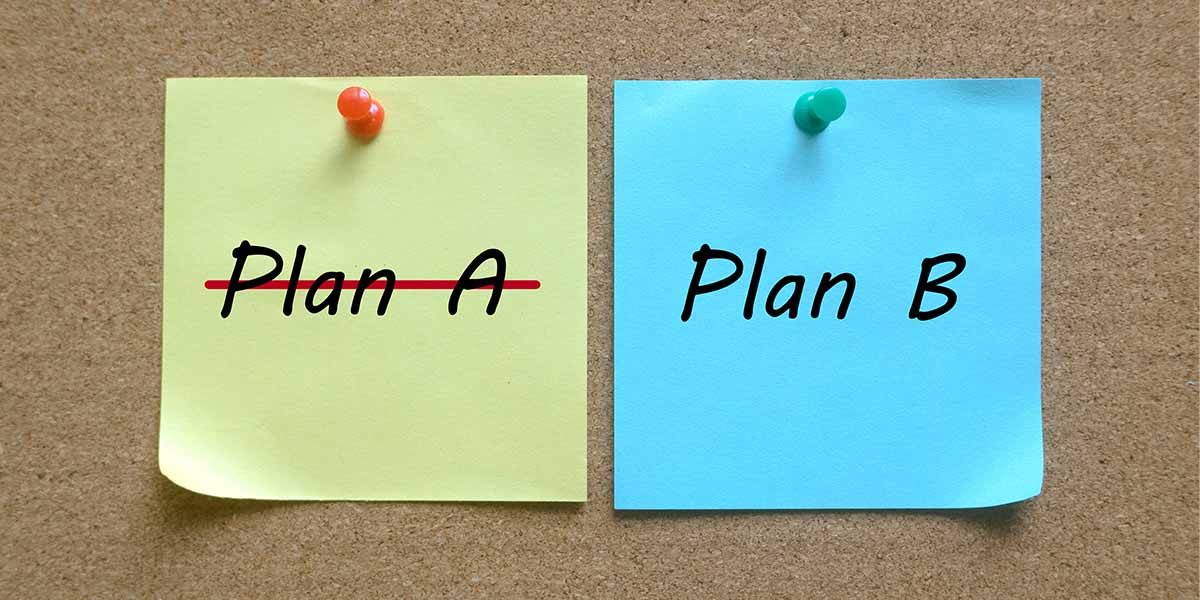Whether you’re celebrating a victory or licking your wounds after coming up short following a hard-fought race, you’re probably not in a hurry to start thinking about the next one. But two things are almost certainly the case. First, I’ll bet there were a bunch of situations in your campaign you’d wish you started earlier. Second, like it or not, your next campaign began the day after the election. In this post, I’ll share four things I think you should be doing after election day.
- Review
- Collect
- Plan
- Execute
Intro
After an election, whether you won or lost, there are good reasons to start putting together a plan. If you won, it will help you do two things. First, it will help improve your constituent service. Second, it will dramatically improve your reelection odds. And if you lost, you’ll be able to remain relevant and in front of voters. In either case, executing a solid digital activism strategy will help make sure you continue the momentum you’ve already built and save you from starting over from scratch in the next cycle.
I see so many candidates and activists who are only active during an election or when an important vote is taking place. Even more frustrating is the number of people I see starting over every time with a brand new website or even brand new social media accounts. Instead of constantly starting over again, you have the opportunity TODAY to make sure you’re a thousand miles ahead of the game the next time.
The Overton Window
Before we talk about these strategies, I want to take a moment to reflect on the goal you’re trying to achieve. My view is that during an election, your job as an activist is to operate within the Overton Window. But between elections, it’s to move the Overton Window. In case you’re not familiar, the Overton window is the range of policies politically acceptable to the mainstream population at a given time. During a campaign, it’s virtually impossible to move that window and in order to get elected, you need to know where the window is and operate inside of it if you want to be successful. Once we’re outside of an election, it’s time to stretch and/or shift that window if it isn’t where you want it to be.
With all of that said, your goals in between elections should be to grow your audiences and to shift the Overton Window. So now let’s take a look at the four things you need to be doing after election day to accomplish those two things.

#1: Review
Debrief
The first thing you’re going to want to do is to perform a comprehensive review or debrief. Many details are fresh in your mind right now that will get less and less sharp over time. Sit down and write yourself a campaign report. What went well? What went poorly? What would you do differently? Take some time to write down as much as you can remember so that you can refer back to it and refresh your memory a year or two later.
Save Results
You’ll also want to make sure you save the voting results. Get the official results from the Secretary of State or town or city clerk. But also clip any reports, articles, blog posts, or other relevant campaign analyses. I’ll talk a little bit more later in the post about storing all of this stuff.
#2: Collect
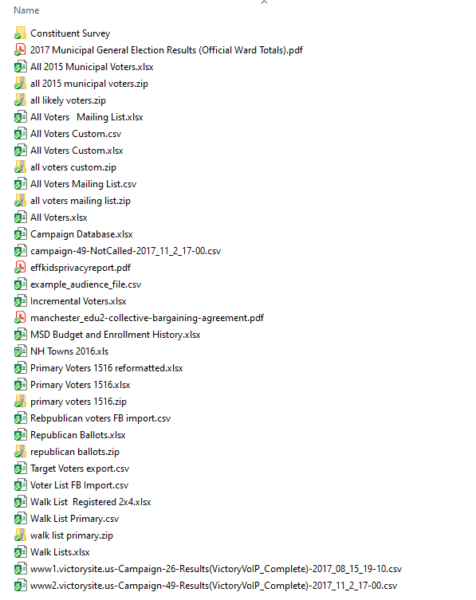
Save Your Lists
The second thing to do after election day is to collect everything. Hopefully, during the campaign, you’ve generated a lot of information. There are a bunch of lists you’ll want to collect and save. These include emails of supporters and donors, event attendees, sign locations, donors, etc. If you’re like most candidates, this stuff is spread out all over the place over different computers, different accounts, and maybe even with other people. Get all of it together and store it in one place.
Digital Assets
The other stuff you’ll want to collect is all of the assets generated during the campaign. Grab all of the photos, videos, palm card files, sign graphics, ad designs, etc. You may even want to go to your social media profiles and download images and/or videos from there. It might save you time later.
Incidentally, it’s worth pointing out that this isn’t strictly limited to your own stuff. You may want to save or clip some of your opponent’s literature, pictures, or social media posts for a possible rematch or simply to troll them over the coming term.
Logins
Finally, be sure to collect all of the login credentials for any accounts associated with your campaign like website login, domain registrar, email account, email provider, etc. In many campaigns, a vendor or volunteer may have created these on your behalf. It’s a good idea to make sure you can access all of those accounts and save the login credentials. The safest way to do this, by the way, is with a password-keeping program like LastPass. Please don’t keep them in a spreadsheet or Word document!
#3: Plan
The third thing you need to do after election day is to plan. Your next election began the minute the polls closed. During your campaign, I’ll bet there was more than one occasion when you thought to yourself, “I wish I’d started this sooner,” or “This would be a lot easier if I had thought ahead.” Well, you now have plenty of time to do all of those things and more. As I often say, the best time to plant a tree was ten years ago. The second-best time is today.
So what are the things you need to include in this plan?
Identify Audiences
In my opinion, the single most crucial aspect of your plan is to create audiences that you’ll be able to leverage later on. Building audiences takes time, care, and feeding. Most often, by the time you realize you need an audience, it’s too late to build one. Online marketers know that audiences are the single most valuable asset any business can have. Yet, most candidates and activists are only actively building them during campaign season. You’ve got a whole lot of time right now to start working on it.
The first thing you should include in your plan is a list of audiences you want to create. Usually, these will focus on particular issues or topics. Remember that successful messaging is all about getting the right message to the right people at the right time. So think about what those messages might be and who should hear it.
So how exactly do you create these audiences? I’ll talk about that a bit later in the post. Still, the basic strategy involves creating content and then finding out who’s interested in that content. More on that later.
Technology Stack
The other plan you’ll need is a technology stack for acquiring these audiences. I’ll be covering technology stacks in detail in another post, but the essential components include:
- A domain name
- A website
- An email provider like Mailchimp
- Social media accounts, like Facebook, Twitter, YouTube, etc.
- Analytics
- And a system for creating a “second brain”
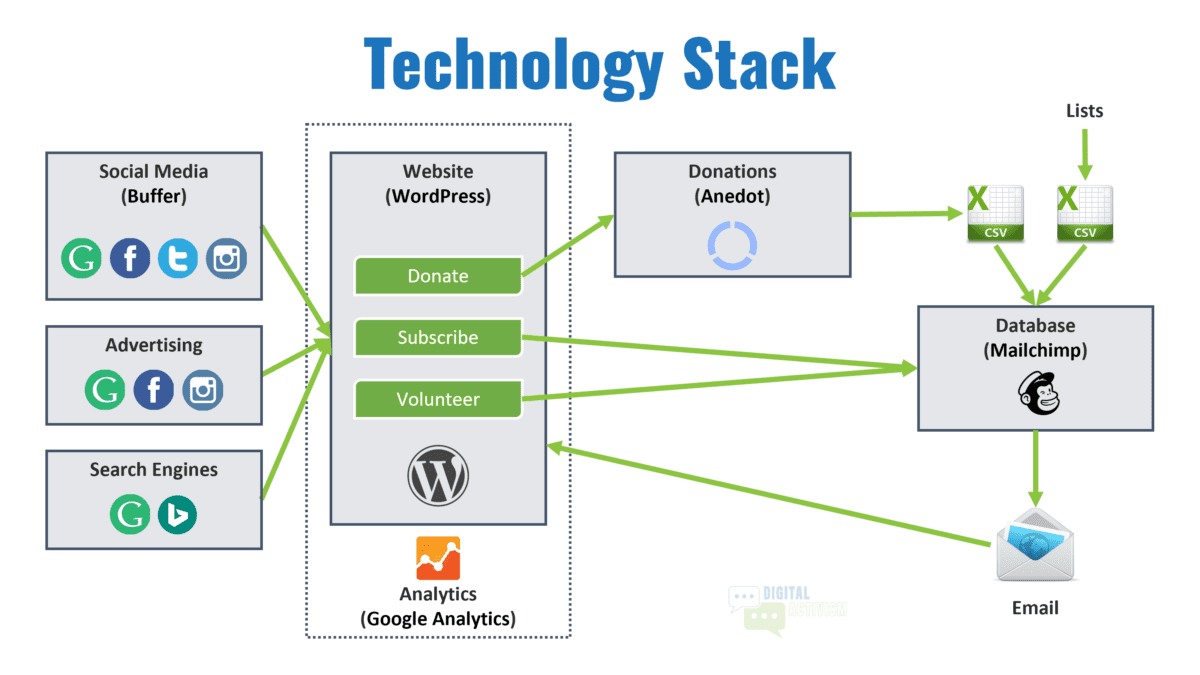
Domain and Website
There are a lot of reasons you’ll want your own domain and website. The most important is that it’s a permanent home for the content that you own and can’t be easily suspended or censored. Another reason is that it’s required to do Facebook ads.
Email List
A high-quality email list is one of the most valuable assets you can have. But it takes time to build one, so the sooner you get started on that, the better. Solutions include services like Mailchimp and MailerLite.
Social media
You’ll want to decide which social media channels you’ll use to deliver your content. Facebook is obvious, but you should consider others like Twitter, YouTube, Instagram, etc.
Analytics
Remember earlier when I said that part of your audience strategy is to find out who’s interested in your content? The mechanism for doing that is web analytics. There are a couple of tools you’ll want to use for this purpose. These are Google Analytics and the Facebook pixel. Both of them are tracking codes that you place on your website that allow you to segment out people who visit your website and interact with your content.
Second Brain

And finally, the last part of your technology stack is a second brain. This is a term used to describe a system for keeping track of your content ideas and then following through on turning them into content. This could be as simple and straightforward as using a pen and a notebook. Personally, I’ve used a program called Evernote for over a decade. I use it for many things, but primarily, it’s an idea depository. When I get an idea for a blog post, I immediately jot it down in Evernote, along with just a few words so that I remember the gist of my vision. I also use it to clip articles from the web that I might reference later or turn into blog posts.
You can use many other tools to build your “second brain,” and Evernote is just one of them. The important thing is to make sure you have a system in place to collect ideas and review them regularly. Another term for this process is “banking.” It’s used in debate to describe the preparation process. I’ll link to an interesting and entertaining discussion on this topic from the Joe Rogan podcast with former Van Halen lead singer David Lee Roth.
#4: Execute
Last but not least, you need to execute your plan. This is all about using content to grow your audiences. There are a couple of ways to do that but before we get into them, let’s talk about the kind of content you need.
Be Remarkable
Not just any content will do. It needs to be remarkable content. “Remarkable” means “worthy of being mentioned.” How, specifically, do you do that? You create content that educates, entertains, or inspires people. If you can do at least one of those things with your content, it’s good. If you can do two of them, it’s really good. And if you can do all three, it’s going to be great content.
Arguably, the easiest of the three is informing. The main reason most people will subscribe or follow someone is to gain access to information they deem valuable to them. Adding humor or creative flair to that information will make it even more appealing. Probably the trickiest to pull off is making your content inspirational. But the more of these characteristics you can weave into your content, the larger and more loyal your audience will become.

Curate
One of the most efficient ways to publish content is to curate it. That means you’re primarily finding interesting content and then sharing it with your audience. To do this effectively, you’ll obviously need to find it first. You can subscribe to email newsletters, follow publishers on social media, read blogs, set up Google Alerts, etc.
But simply performing a content “passthrough” operation isn’t remarkable. People may still find that valuable because it saves them time. But if you really want to be successful at being a content curator, you’ll want to add value by adding context and/or meaning. Don’t simply tell your audience what happened. Tell them what it means and why they should care.
Curated content can and should make up the majority of your content. It’s much more efficient than creating it. But curation alone isn’t going to get you the best results. You will want to publish original content, too.
Create
Content creation is a huge topic that goes way beyond the scope of this article, so I definitely encourage you to check out some of the other content resources.
One of the first things you’ll need to decide about creating content is the medium you’ll use. Are you going to make videos, write blog posts, send email newsletters, create graphics, or all the above? As you consider these options, be aware that video is by far the most effective way to drive audience engagement. With all of the technology available to us today, it’s easier than ever for everyone to produce video content. It’s the preferred form of your audiences and most social media platforms.
Tell Stories
Regardless of the medium you choose, you’re going to need to make sure it’s quality content. Of course, that means the output itself – whether it’s words or video – needs to be well-done. But regardless of the format, it needs to be engaging. One of the best ways to do that is to tell stories. Again, we could talk for hours or even days about how to do this but there is a basic formula that stories follow. That formula is the three-act play (also known as the Hero’s Journey), which has a lot in common with the Human Action Model developed by Ludwig von Mises.
They both utilize the same components but present them in different orders.
| 3-Act Structure/Hero’s Journey | Human Action Model | |
| One | An inciting incident happens to the protagonist that throws their life out of balance. | Create a sense of unease. This is “where you are.” |
| Two | The protagonist faces conflict and struggles to restore balance. | Create a shared vision of a better future. This is “where you want to be.” |
| Three | Balance is restored – for better or worse. | Present a path to that better future. This is “how you get from here to there.” |
These are extremely powerful tools for creating compelling, remarkable content. The better you become at incorporating them into even the most seemingly dull news stories, the more successful you’ll be. At building your audiences.
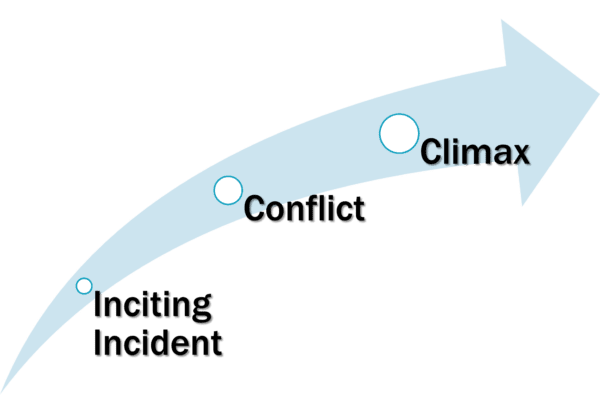
Build Audiences
Speaking of building audiences, I told you at the beginning of the post that I’d provide specific tips on exactly what that means and how to do it. There are four types of audiences I’m going to cover.
Website Visitors
In order to track visitors and build an audience from them, you’re going to need to install tracking codes on your site. Each platform will have its own tracking code. First, you’ll want to make sure you have Google Analytics installed because it gives you a wealth of information about traffic patterns and sources on your website. You’ll also want the Google Remarketing tag in order to create audiences you can use on Google networks like search, Gmail, YouTube, etc. The other super-important tracking code to install is the Facebook pixel. This will allow you to target website visitors with Facebook ads. Finally, there are lots of other tracking codes to consider like Twitter, Pinterest, etc. But Google and Facebook are the priorities.
Social Media Followers
Growing your social media audiences is also important. This means Facebook fans, Twitter followers, YouTube subscribers, etc.
Video Viewers
The third type of audience you want to build is video viewers. On both Facebook and YouTube, you can create audiences of people who watched your videos and target them with ads.
Email Subscribers
Finally, and probably most importantly, the fourth type of audience you want to build is email subscribers. Email done correctly is still hands-down the most valuable and effective way to reach people. You should have a strategy in place to consistently and deliberately grow your subscriber base by offering content that informs, entertains, and inspires.
Conclusion
So to wrap this up, it’s never too early to start working on the next campaign. Your goals should be to grow your audiences and move that Overton Window. The four things you need to do today in order to get that ball rolling are to review what just happened, collect all the data and assets you can, build out a plan to achieve these goals, and lastly to execute that plan.
